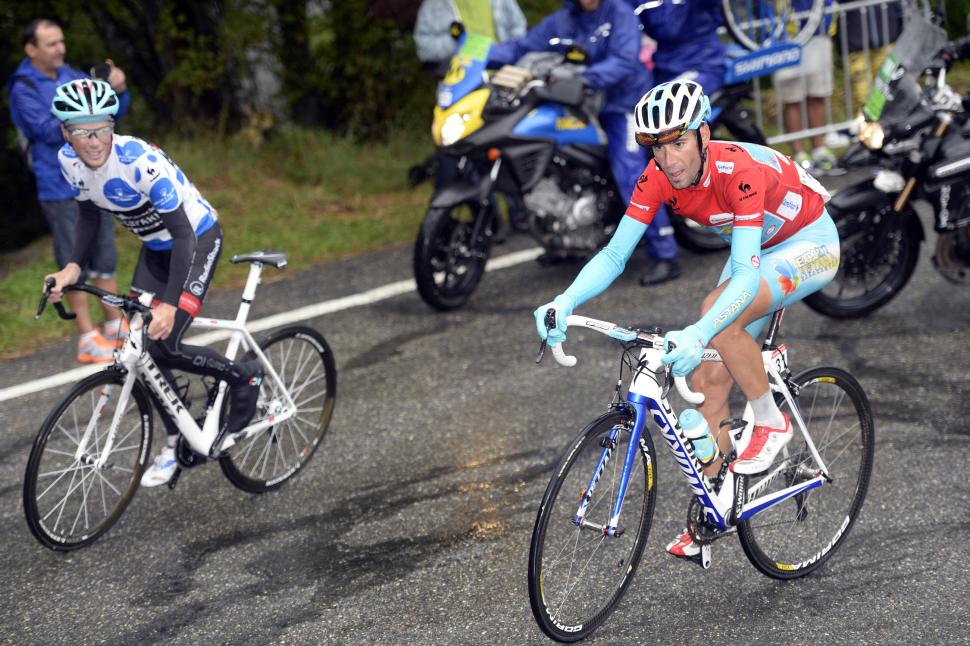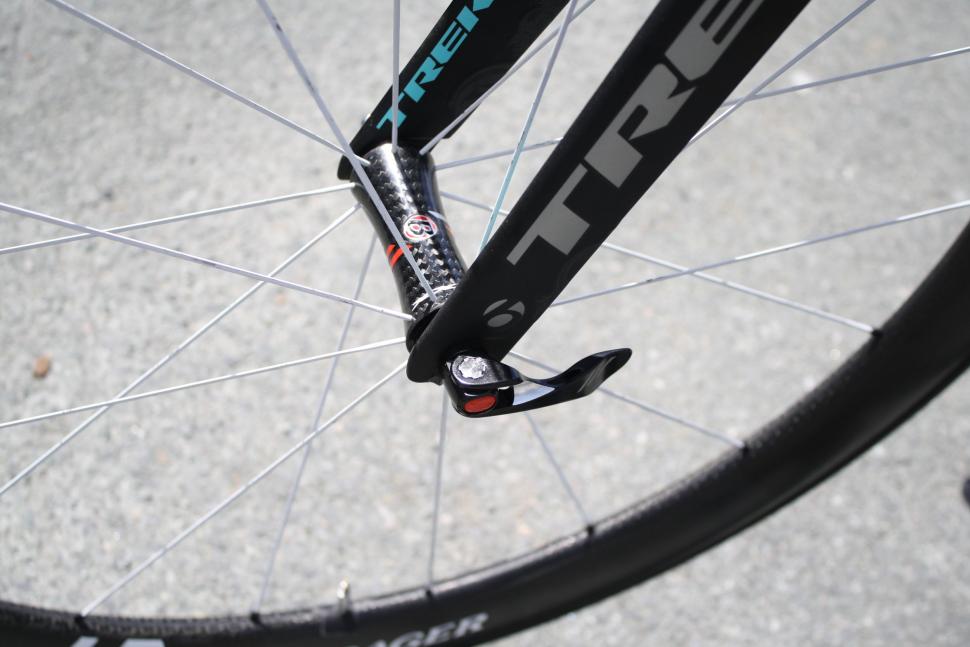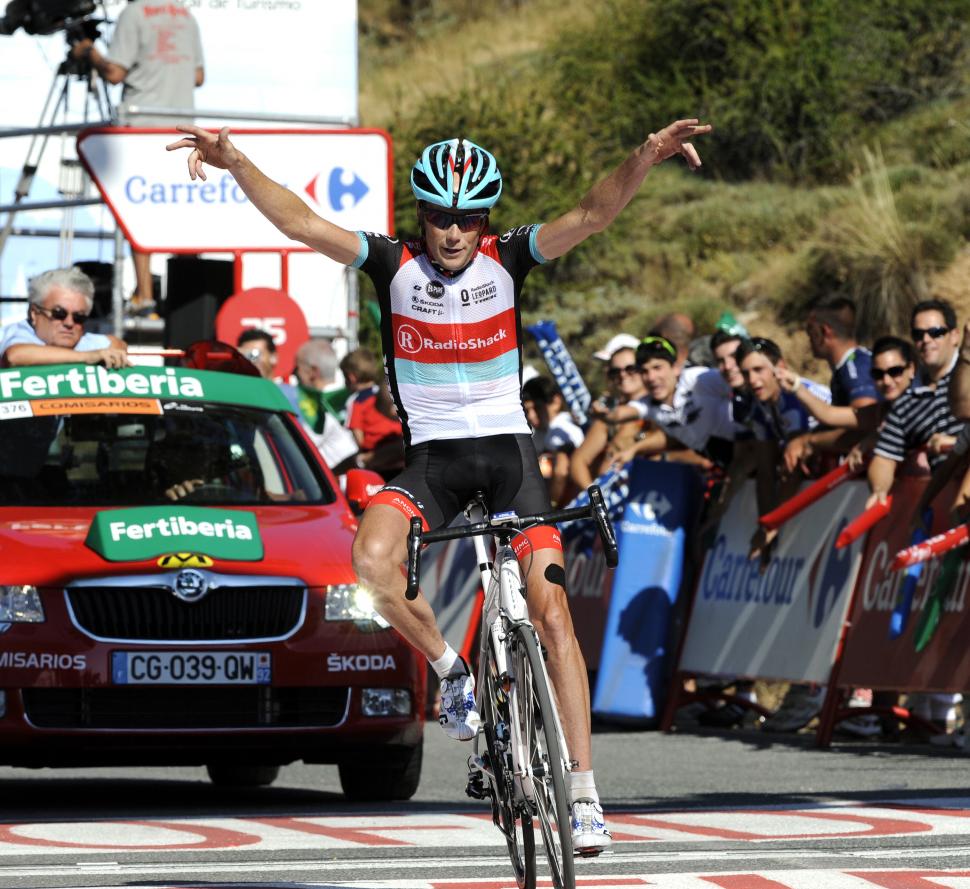- News
- Reviews
- Bikes
- Components
- Bar tape & grips
- Bottom brackets
- Brake & gear cables
- Brake & STI levers
- Brake pads & spares
- Brakes
- Cassettes & freewheels
- Chains
- Chainsets & chainrings
- Derailleurs - front
- Derailleurs - rear
- Forks
- Gear levers & shifters
- Groupsets
- Handlebars & extensions
- Headsets
- Hubs
- Inner tubes
- Pedals
- Quick releases & skewers
- Saddles
- Seatposts
- Stems
- Wheels
- Tyres
- Tubeless valves
- Accessories
- Accessories - misc
- Computer mounts
- Bags
- Bar ends
- Bike bags & cases
- Bottle cages
- Bottles
- Cameras
- Car racks
- Child seats
- Computers
- Glasses
- GPS units
- Helmets
- Lights - front
- Lights - rear
- Lights - sets
- Locks
- Mirrors
- Mudguards
- Racks
- Pumps & CO2 inflators
- Puncture kits
- Reflectives
- Smart watches
- Stands and racks
- Trailers
- Clothing
- Health, fitness and nutrition
- Tools and workshop
- Miscellaneous
- Buyers Guides
- Features
- Forum
- Recommends
- Podcast
feature
 Radioshack Leopard Trek Madone 7.9 bike at bedtime
Radioshack Leopard Trek Madone 7.9 bike at bedtimeWhite spokes, tubs and no front-end integration: Chris Horner's Vuelta-winning Trek Madone from 2013
In 2013, at the age of 41, Chris Horner became the oldest rider to win the Vuelta a España, or any Grand Tour for that matter. He's also the most recent American to win a Grand Tour, but will Sepp Kuss be next? Let's take a look at Horner's Radioshack Leopard team edition Trek Madone 7.9 that he propelled to victory a decade ago, featuring tubular wheels and dirt-unfriendly white spokes...
The 2013 Vuelta a España was a showdown between Nibali and Horner and the battle of Specialized versus Trek, but it was the veteran American and his American-branded bike that came out on top. It was one of the most surprising Grand Tour victories of recent times, and also made Horner the oldest to achieve this feat.
The Radioshack Leopard team had the choice of two top-end race bikes for the 2013 season after Trek launched the all-new Domane and the updated Madone back in 2012.
They chose the Domane 6.9 for the Classics, a cobble-taming race bike with an innovative suspension frame design, and the more aerodynamic Madone 7.9 for the Grand Tours.
The Madone is one of Trek's most established models, and it underwent one of its most significant overhauls to date at this time. There was a strong focus on enhancing aerodynamics, resulting in some striking transformations.
> Has aero gone too far? The most excessive cycling tech made to shave milliseconds
Attention was immediately directed to the rear stays, where the brake caliper had disappeared. It was moved to beneath the chainstays behind the bottom bracket to minimise aerodynamic drag and also reduce weight due to the absence of a brake mount.
Kammtail Virtual Foil (KVF) tube profiles, taken from Trek's Speed Concept time trial bike, were incorporated into the main tubes in the front triangle. This tube design and the repositioning of the rear brake, claimed to make the bike much faster overall, saving 25 watts when riding at 40kph, Trek said.
In contrast to some of the best aero bikes of today, the Madone 7.9 lacks front-end integration and doesn't feature aero profile handlebars.
Instead, you'll notice that Horner's drops are an unsual shape and these are from Trek's own component brand Bontrager - the Bontrager RL anatomic bar, which are ergonomically shaped to enhance comfort.
Bontrager also supplied the stems, seatpost and saddle.
Another interesting feature is that Horner attached his race number inside the front triangle rather than on the seat tube where we would ordinarily see it, which was perhaps thought to mitigate some of the aerodynamic disadvantages.
The wheels are also from Bontrager, and you'll either love or hate the white spokes!
Horner used the Aeolus D3 tubular wheels in a choice of 35, 50, 70 and 90mm deep, combined with Schwalbe Ultremo HT tubular tyres with a claimed weight of 250g.
Tubular wheels are now largely a thing of the past in the pro peloton with the rise of tubeless setups, but tubular setups are still often lighter than tubeless.
> Have we witnessed the death of tubular tyres?
The groupset of choice was Shimano's latest version of its electronic groupset at the time, Dura-Ace Di2 9070 11-speed.
It had a much cleaner design than the previous version of Dura-Ace, with noticably more compact derailleurs, and the battery could be slipped inside the seatpost rather than hanging off the bottom of the downtube.
Finally, SRM supplied the crank-based power meters, which still have a reputation for being some of the best power meters even today.
Check out our other Bike at Bedtime features here.
Emily is our track and road racing specialist, having represented Great Britain at the World and European Track Championships. With a National Title up her sleeve, Emily has just completed her Master’s in Sports Psychology at Loughborough University where she raced for Elite Development Team, Loughborough Lightning.
Emily is our go-to for all things training and when not riding or racing bikes, you can find her online shopping or booking flights…the rest of the office is now considering painting their nails to see if that’s the secret to going fast…
Latest Comments
- Miller 1 sec ago
I have known more than one elder statesman of the club die of a heart failure while out on a ride. Sometimes I feel that's about to happen to me,...
- Pub bike 17 min 3 sec ago
Via the "wireless active steering system".
- AidanR 25 min 36 sec ago
It does say "so-called reciprocol" to be fair. But I agree, Trump calling the tariffs reciprocol is disingenuous at best, given that they are based...
- Hirsute 40 min 46 sec ago
137m is the farthest I have observed when quickly looking at the Garmin unit....
- pockstone 58 min ago
Yours worked wonders, but if you insist, I'll hop to it...why the need for extra police? Did the fire brigade bottle it?
- Jamminatrix 1 hour 11 min ago
As if Tadej Pogacar's slavery-supporting jersey is any different...
- BikingBud 4 hours 42 min ago
Do you mean this woman, who got out to marshall the truck through and is now walking back to said Wankpanzer which is blocking the road again as it...
- Pub bike 46 min 44 sec ago
He is up against the global trading system, which has obviously been in the news a lot lately. Framebuilders in other countries can undercut him,...




Add new comment
1 comments
Yes, his was indeed a very surprising victory.